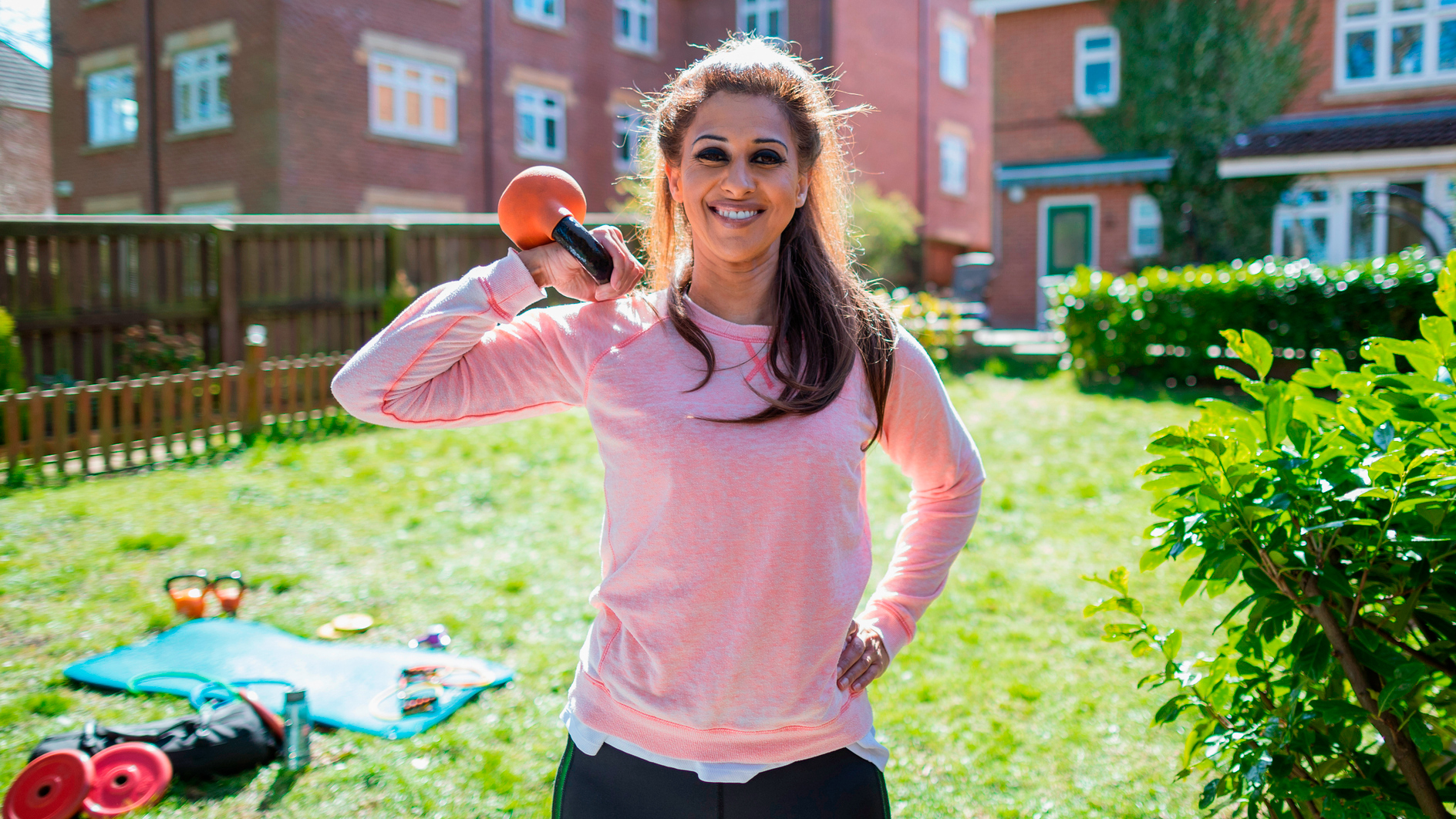These are a personal trainer's top three beginner-friendly kettlebell exercises for building strength
Put them together for an accessible workout that will build full-body strength

If you’ve never picked up a kettlebell before, they can look pretty intimidating. However, these free-weights are a great way to add load to functional movements.
To see what I mean, try these three moves, recommended by Gary Tran, a NASM-qualified personal trainer for Gold’s Gym SoCal.
Start with a light kettlebell and make sure you’re comfortable with the movement pattern of each exercise, then look to gradually increase the weight as you repeat the workout.
It’s well worth adding a kettlebell to your home gym, because they offer unique advantages that set them apart, especially as you learn more advanced moves like the swing, clean and snatch.
“Their distinctive shape, with an offset center of gravity, challenges your muscles more dynamically and functionally than standard dumbbells,” says Tran. “This design engages stabilizing muscles, improves coordination and enhances core strength with every movement.”
1. Deadlift
Sets: 3 Reps: 10
- Stand with your feet shoulder-width apart with the kettlebell on the floor between your feet
- Engage your core and, maintaining a straight back, push your hips back and bend your knees slightly to lower far enough to take hold of the handle in both hands.
- Push your hips forward to stand up. Imagine you are pushing the floor away from you.
- Push your hips back and bend your knees slightly to place the kettlebell back on the floor.
2. Upright row
Sets: 3 Reps: 10
Start your week with achievable workout ideas, health tips and wellbeing advice in your inbox.
- Stand with your feet shoulder-width apart, holding the kettlebell in front of your body with both hands (use the deadlift movement, above, to lift the kettlebell into this position).
- Engage your core and move your shoulders back and down, then raise your elbows out to the sides to lift the kettlebell to your upper chest.
- Lower the kettlebell with control.
- Your elbows should stay above your hands throughout and don’t shrug your shoulders to lift the weight—if you have to do that to move the weight, switch to a lighter kettlebell.
3. Goblet squat
Sets: 3 Reps: 10
- Stand with your feet shoulder-width apart, holding the sides of the handle of the kettlebell in front of your chest, with your elbows tucked into your torso.
- Engage your core, then bend your knees and push your hips back to lower until your hips are in line with your knees, or as low as your mobility allows.
- Push through your heels to stand up.

Lou Mudge is a Health Writer at Future Plc, working across Fit&Well and Coach. She previously worked for Live Science, and regularly writes for Space.com and Pet's Radar. Based in Bath, UK, she has a passion for food, nutrition and health and is eager to demystify diet culture in order to make health and fitness accessible to everybody.
Multiple diagnoses in her early twenties sparked an interest in the gut-brain axis and the impact that diet and exercise can have on both physical and mental health. She was put on the FODMAP elimination diet during this time and learned to adapt recipes to fit these parameters, while retaining core flavors and textures, and now enjoys cooking for gut health.



